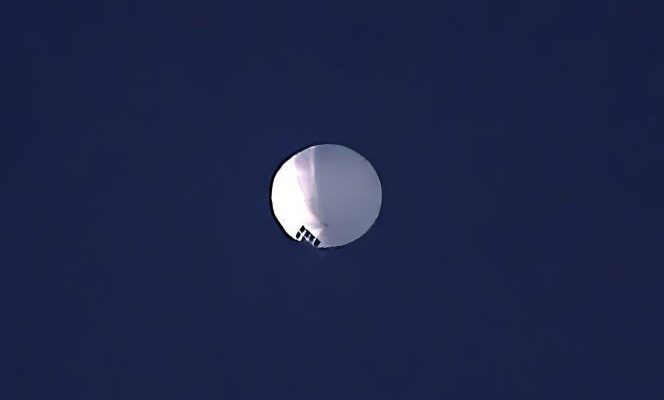Surveillance machine that came to spy on sites “sensitive”, including nuclear missiles, as Washington claims? Or simple “civil aircraft, used for research purposes, mainly meteorological”, who would have gone astray, as Beijing defends itself? Since the United States revealed, Thursday, February 2, the presence of a stratospheric balloon of Chinese origin above the state of Montana, speculation has been rife about the exact nature and capabilities of the machine. , whose size would be equivalent to that of three buses.
According to experts, sending a spy balloon into the upper airspace (Higher Airspace Operations, HAO, in English), that is to say at an altitude between 20 and 100 kilometers, has several advantages. “Unlike a surveillance satellite in low orbit, which circles the Earth every ninety minutes, a device sent into the stratosphere can stay above the same area for a long time, which allows more optical or electromagnetic observations to be made”explains a military source.
Above all, this so-called HAO zone is not currently regulated by any text or international agreement, unlike the airspace, located below 20 kilometers in altitude, governed by the Chicago Convention of 1949, or space itself, beyond 100 kilometres, which meets standards set in 1967 in a treaty on outer space. In other words, nothing prevents China a priori from sending a machine over another country if it is located in this area. A legal vagueness which, for some, would explain the American hesitation to shoot down the Chinese intruder.
Directed remotely
“Sending a stratospheric balloon over the United States can also be a way for China to test American anti-aircraft defense: at what altitude is it detected? Can it be destroyed? How ? The answers to these questions are undoubtedly of interest to Beijing”, believes for his part Joseph Henrotin, researcher at the Center for Analysis and Forecasting of International Risks. In this respect, the presence of solar panels on the Chinese balloon, attested by photos, would tend to prove that it can be controlled from a distance.
Pointed out, China is not the only one to take an interest in the upper atmosphere. In 2022, for example, the European Commission launched a programme, called EuroHAPs (High Altitude Platform Systems Demonstration) and endowed with 1.2 billion euros, to develop stratospheric balloon or airship projects for military intelligence. The Franco-Italian Thales Alenia Space is working in particular on a platform called Stratobus, capable of carrying out surveillance operations from an altitude of 20 kilometers.
